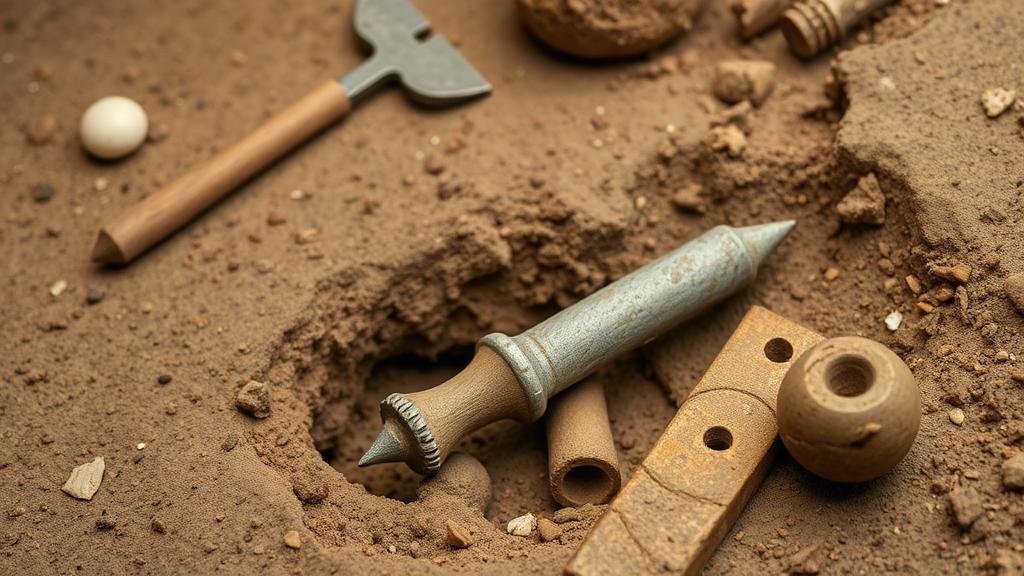Unearthing Tools and Relics in Early Mining Tunnels and Shafts
Unearthing Tools and Relics in Early Mining Tunnels and Shafts
The historical practice of mining has left a rich legacy of tools and relics buried within tunnels and shafts. These artifacts provide valuable insights into the technological, cultural, and economic contexts of early mining activities. Through archaeological methods, researchers can unearth these elements, helping to reconstruct mining practices and lifestyles from past eras. This article explores the various tools and relics discovered in early mining operations, the techniques employed in archaeological excavations, and their implications for understanding historical mining expeditions.
Historical Overview of Mining
Mining has been a critical driving force for economic development since antiquity. Evidence of mining activities can be traced back to the Paleolithic era, with significant advancements occurring during classical civilizations such as Rome and in the medieval period. Early mining techniques involved manual labor and rudimentary tools, which have evolved significantly over time.
- In Roman times, hydraulic mining technologies allowed for more efficient extraction of precious metals.
- The introduction of the pickaxe in the Middle Ages represented a significant advancement in extracting minerals from hard rock.
Understanding these tools and their uses is crucial for grasping the evolution of mining practices.
Common Tools Found in Early Mining Operations
The relics discovered within mining tunnels and shafts often include various hand tools used by miners. Each tool played a specific role in the mining process:
- Pickaxes: Essential for breaking rock and loosening materials, pickaxes were among the first tools used in mining.
- Shovels: Used for removing loose material, shovels frequently accompanied pickaxes in early mining operations.
- Drills: Simple handheld drills allowed miners to create holes for explosives or to remove core samples.
- Lanterns: Essential for illuminating dark shafts, lanterns often used oil or candles as their light source.
These tools not only highlight the skill and ingenuity of early miners but also reflect the safety and efficiency challenges they faced in underground work environments.
Techniques for Unearthing Relics
Archaeologists employ several techniques to excavate and analyze relics found in mining tunnels and shafts:
- Stratigraphic excavation: This method involves carefully digging in layers, allowing researchers to date artifacts and understand their context.
- Site surveys: Preliminary surveys help assess the potential of mining sites and identify areas rich in artifacts.
- Dating techniques: Radiocarbon dating and dendrochronology are crucial for establishing timelines of mining activities.
These techniques allow researchers to piece together a narrative of historical mining practices and life in mining communities.
Case Studies of Mining Excavations
Numerous successful excavations have yielded remarkable findings that enhance our understanding of early mining practices:
- Egyptian Gold Mines: Archaeologists exploring the ancient gold mines of the Eastern Desert have uncovered tools used over 5,000 years ago, revealing advanced techniques in gold extraction.
- The Cornish Mines: Excavations in Cornwall, England, have revealed a wealth of mining tools and infrastructure from the 18th and 19th centuries, illustrating the regions booming mining industry.
These case studies not only enrich our understanding of mining technologies but also provide insights into the lives of miners and their communities.
Impact on Modern Understanding of Mining
The study of early mining tools and relics has profound implications for modern practices. Understanding historical mining methods informs current best practices in mining safety, efficiency, and environmental considerations. For example:
- The ergonomics of modern mining tools can be traced back to the development of early hand tools.
- Lessons learned regarding environmental stewardship from past mining mistakes guide contemporary reclamation practices.
By studying the past, modern mining industries can adopt strategies that enhance sustainability and worker safety.
Conclusion
Unearthing tools and relics from early mining tunnels and shafts offers invaluable insights into the historical practices, technologies, and lives of miners. Through systematic excavation and analysis, archaeologists are able to reconstruct the narrative of mining activities and their impacts on society. The findings not only enhance our understanding of the past but also inform modern mining practices, making it essential for continued research and preservation efforts in this field.
As we unearth these relics, we not only honor the labor and ingenuity of those who preceded us but also ensure that their stories are not forgotten as we advance into the future of mining.



